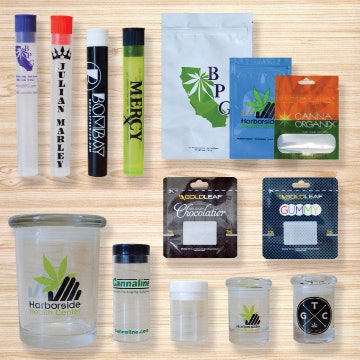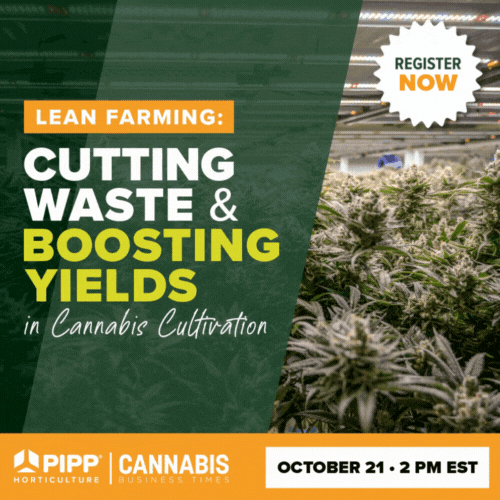
New growers are joining the industry, hoping to capitalize on rapid growth and broader public acceptance of marijuana use. Newcomers and many veterans have a steep learning curve when it comes to understanding how important packaging and branding is to their product, and how compliance plays a role in packaging choices and quantities ordered. These factors are a significant part of the total cost of goods regardless of the type of product being sold.
What makes a great cannabis package? Here’s how Nick Kovacevich, CEO of Kush Bottles, a distributor of marijuana packaging and supplies, defines packaging:
- It keeps the product safe, convenient and compliant with regulations
- It is labeled to educate consumers about the product and its possible effects
- It draws consumers with a compelling brand message
- It fits into the company’s economic model, whether operating in a single state or attempting to build a national or international brand.
In trying to meet those criteria, growers are most often challenged by the cost of packaging and processing, according to Garett Fortune, CEO of FunkSac, a Colorado-based packaging company. “You want the compliant side of your house to be in order, and you want to market your product in a way that dispensaries and retailers can sell it,” Fortune says. “But there is cost associated with that.”
Packaging that meets American standards for safety and food-grade materials can be costly. “In a market like ours, people gravitate toward the value of American-made, but money is also a national value, and it’s a huge consideration for us,” says Christian MacMillan, vape specialist at Rogue Raven Farms in Shelton, Washington.
As the industry gets more competitive, some are turning to cheaper alternatives, many of which are not certified or FDA-approved. “You have to remember that, whether it’s flower or edibles, cannabis is an ingestible item, and it needs to be secure — not packaged in something that could be carcinogenic,” Fortune says. “I encourage growers to get the certified paperwork that shows the test results — not just results that appear on a company’s letterhead, showing that they passed or failed. You want to see the actual test results.”
Buying packaging in bulk has been a common money-saving strategy among growers, but it can backfire when state requirements or market conditions change too quickly. “From the beginning, we invested quite a bit of money in our packaging, but as more producers came into the market, there was greater pressure on pricing, and we had to switch to a more economical way of packaging,” says Rachel Cooper, operations manager at Monkey Grass Farms in Wenatchee, Wash.
Washington’s decision to require a 16-digit UBI (unified business identifier) number on all packaging put Monkey Grass Farms in a bind. “It caused quite an uproar in our state because we had thousands of dollars in packaging inventory that wouldn’t be compliant under the new rules,” Cooper says.
_fmt.png?auto=format%2Ccompress&fit=max&q=70&w=400)
Cooper encourages growers to stay connected with their state’s regulatory body and become active in industry associations. “That’s been huge for us, because our association lobbyists know about things that are coming down the pike before we do,” she says. “We also stay in touch with state legislators who make decisions about our industry.
“I think if you’re in this business and you don’t know the regulations on packaging, then you’re in trouble,” she says. “I would never rely on someone else to understand our requirements. If you’re working in the industry, you need to know the law from top to bottom.”
Rogue Raven Farms has a similar compliance philosophy: The company hired an experienced in-house expert from neighboring Colorado, which is known for its stringent packaging standards. MacMillan says having a dedicated resource helps the company watch Washington’s cannabis regulations on a daily basis.
Those with national ambitions often choose to hire consultants with regulatory expertise. “Consultants have a set of industry best practices, and they know what’s going on at [the] national level and what’s going on in other states,” Fortune says.
Even with the right experts involved, variation in rules across states and countries can thwart efforts to grow a national or international brand. Members of the National Cannabis Industry Association are writing federal guidelines that could help the entire industry by standardizing requirements across the United States. Meanwhile growers and packagers have little choice but to invest in research and innovation that can help them meet consumer demand and satisfy each state’s labeling and packaging requirements.
Child-Proof Packaging
The market for child-resistant packaging has been ripe with innovation, according to Fortune. FunkSac is on its third version of child-resistant packaging for the cannabis industry. “Just because you have a child-resistant closure doesn’t mean the bag is child-resistant,” he says. “You have to test all that, and with edibles packaging, the plastic needs to be tested to meet the certification standards of 16 CFR 1700 [Poison Prevention Packaging code]. So we’re exploring different plastics, dealing with resin and film manufacturers, and doing research and development to innovate by borrowing from other industries and coming up with our own solutions.”
One of the most recent child-resistant packaging options, Child-Guard pods made by Presto, mimics an idea that protects children from eating laundry and dishwasher detergents. FunkSac received a license to market flexible pods to the cannabis industry and launched within the past two years.

Pharmaceutical vials are still among the most popular options for child-resistant packaging of medical or recreational cannabis. “People like the child-resistant pop-top bottles because they are all one piece, so you don’t lose the top,” says Kovacevich. When consumers squeeze the sides near the top of the vial, the container opens.
To protect children, growers also have embraced traditional twist-and-turn pharmaceutical vials. “We didn’t think the industry would want to adapt twist-and-turn vials because they are so associated with the pharmaceutical industry, but ultimately, it’s a staple for child-resistant packaging,” Kovacevich says.
Some states allow cannabis to be placed in a container that isn’t child resistant if it is later transferred, upon sale to a consumer or patient, to a child-resistant exit package. Kush Bottles offers The Satchel, a child-resistant product that looks like a wine bag and closes with two interlocking cinching mechanisms. FunkSac markets a similar product called FunkGuard.
The packaging industry has many talented people working on child-resistant packaging for cannabis, according to Arnold Heckman, CEO at Cannaline, a Maryland-based company that specializes in packaging for the cannabis industry. As a result, he expects to see many new packaging solutions introduced to the market.
Cannaline is working on a patent-pending, tamper-evident, resealable bag for flower, edibles and any cannabis-related item that requires child-resistant packaging. It also plans to introduce a new child-resistant glass concentrate container.
In an industry that draws environmentally conscious consumers, some growers try to make eco-friendly packaging part of their brand identity. But packaging manufacturers say there are very few affordable materials that are truly biodegradable.
In markets where child resistance isn’t an issue, Kush Bottles encourages recycling by selling glass jars that can be cleaned and refilled. In some regions, it also offers a recycling program.
In an industry that is quickly gaining public acceptance, and seeing ever-increasing competition and frequently changing regulations, smart design and packaging, as well as smart shopping, could help pave the path to success for many cannabis-related businesses.
















